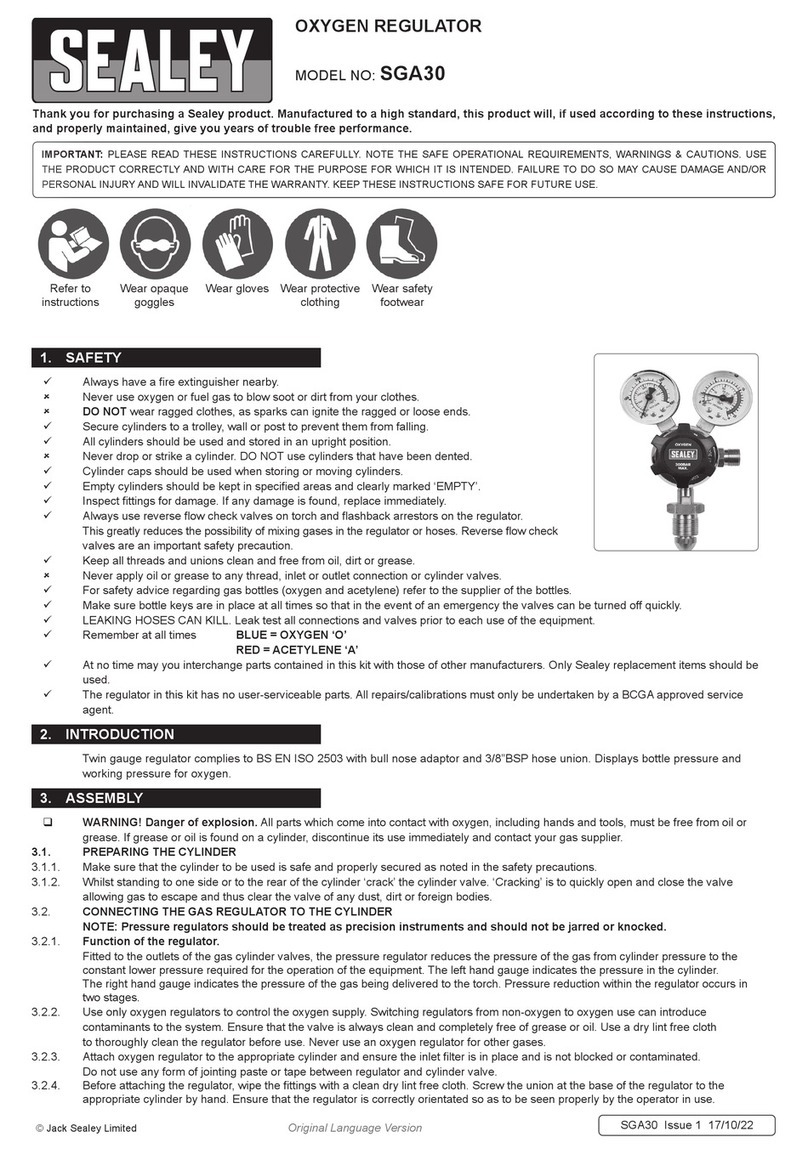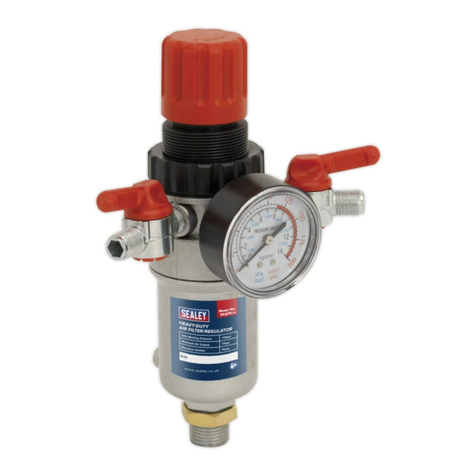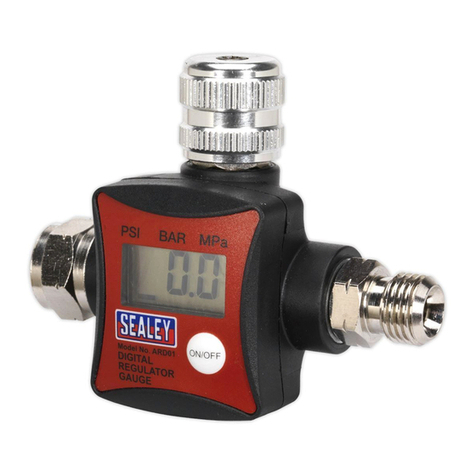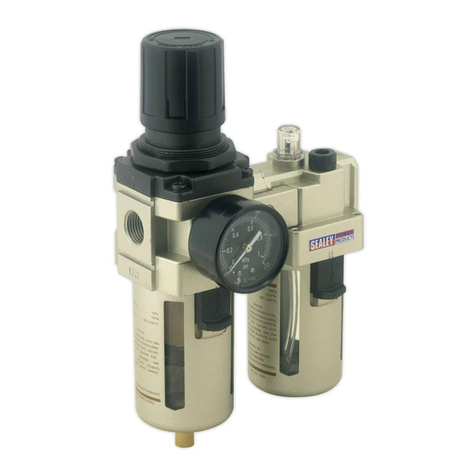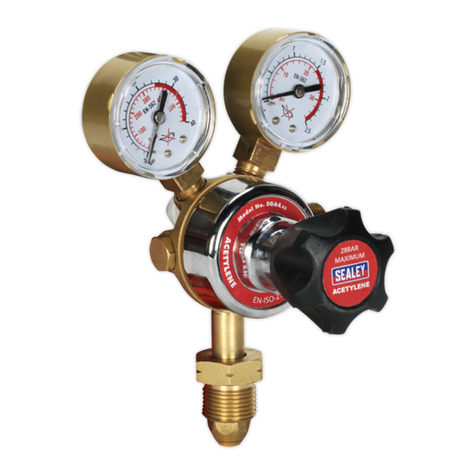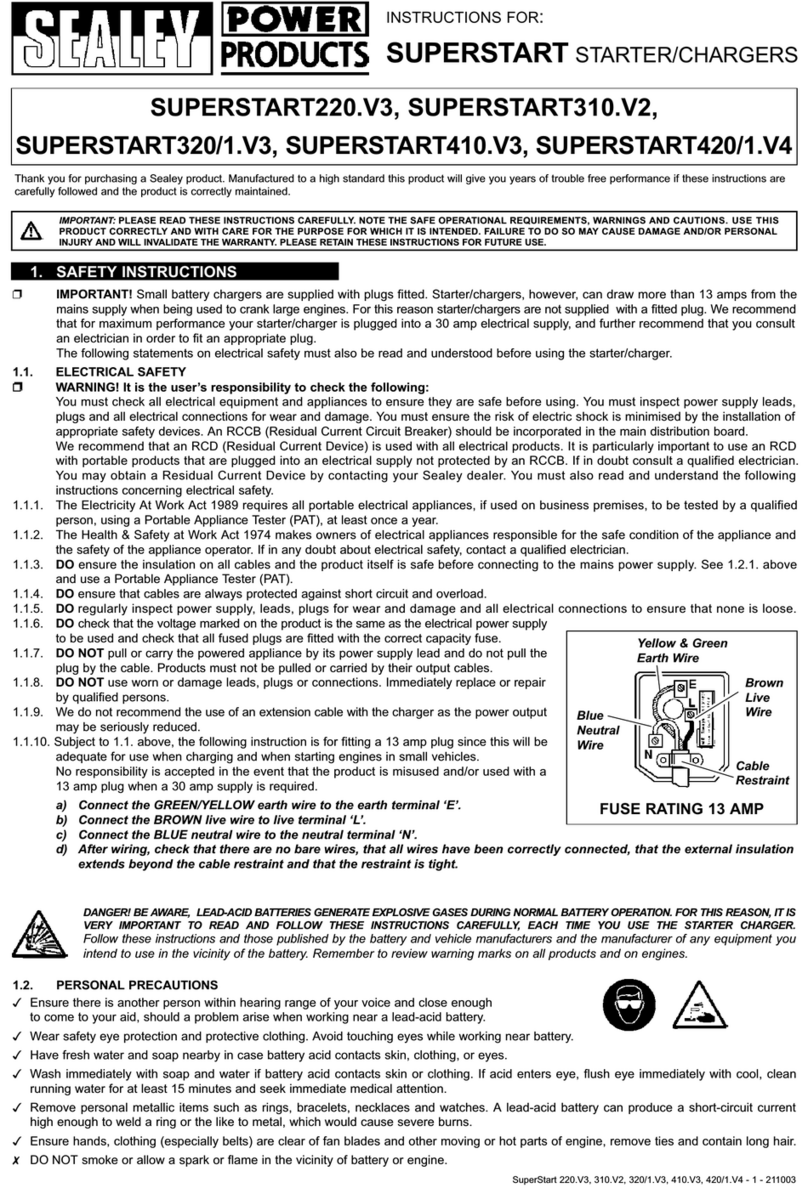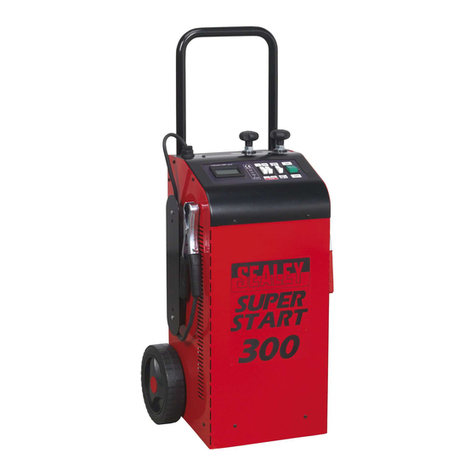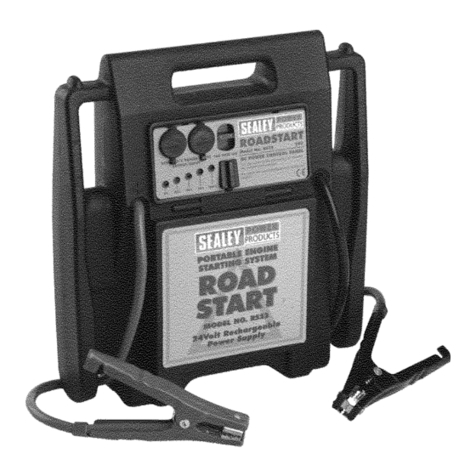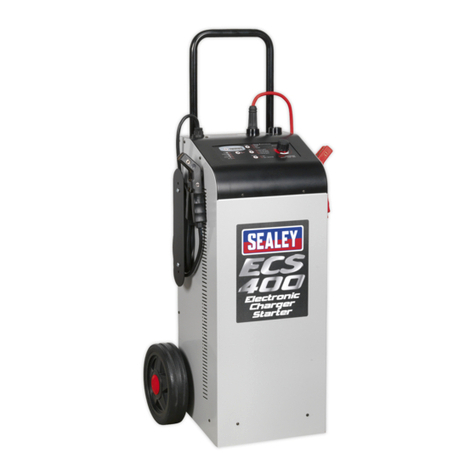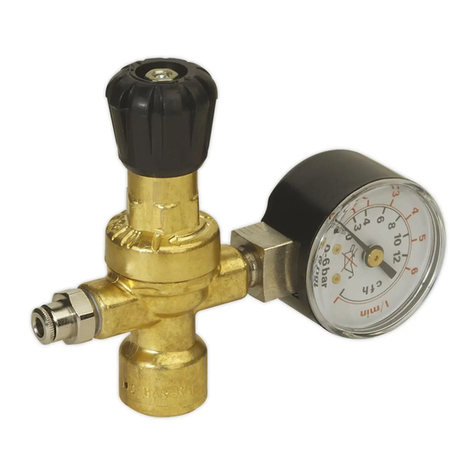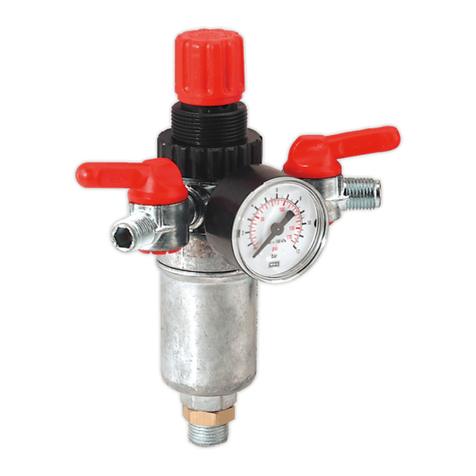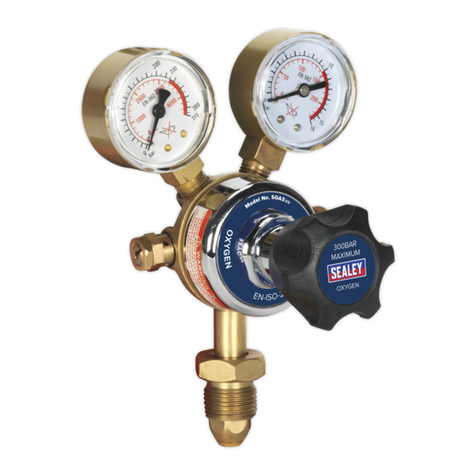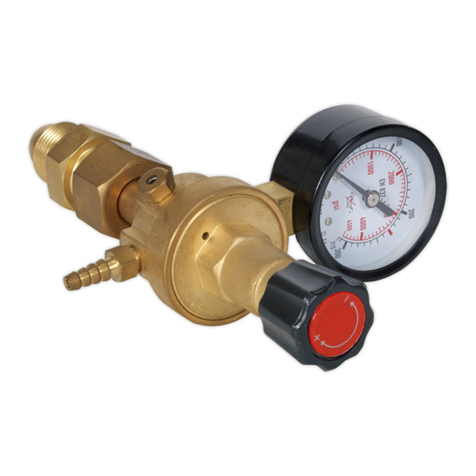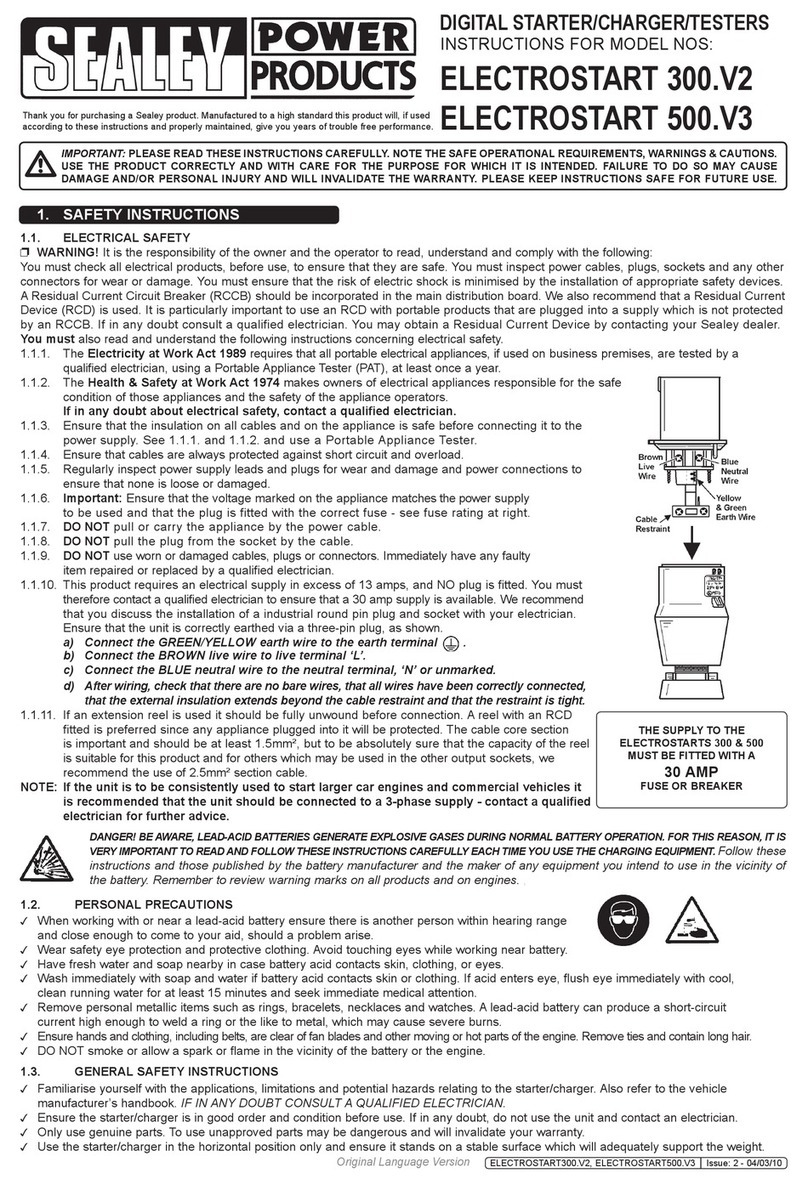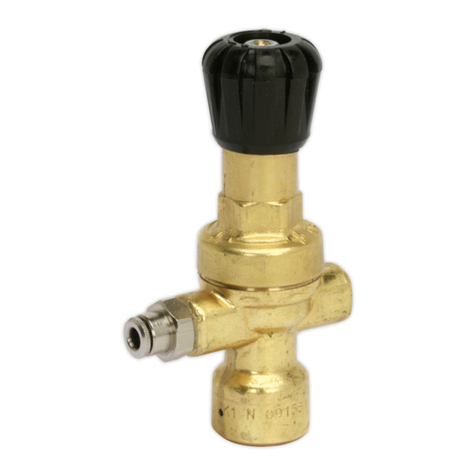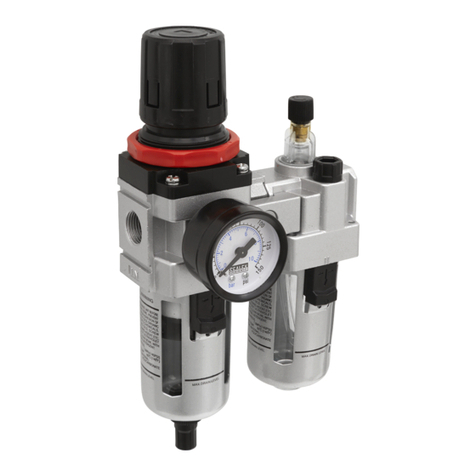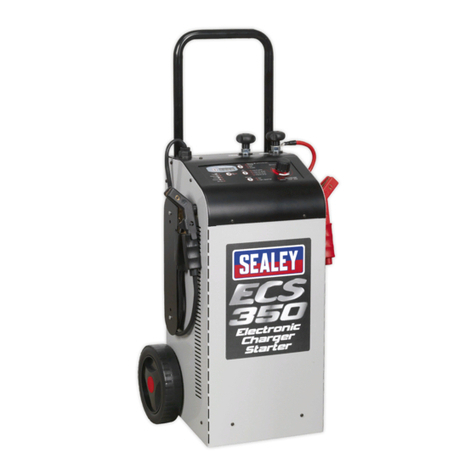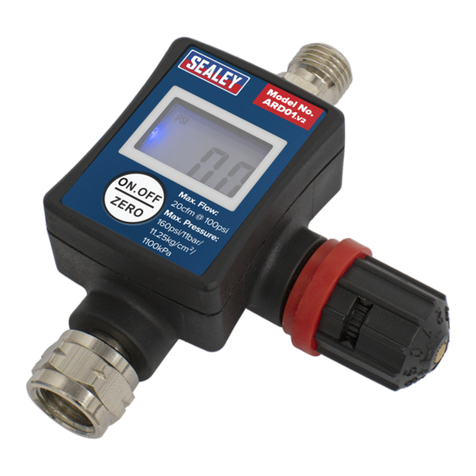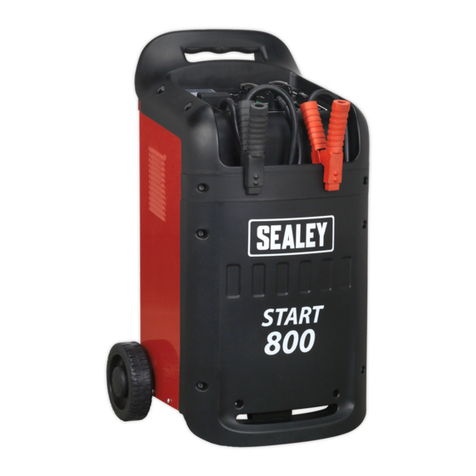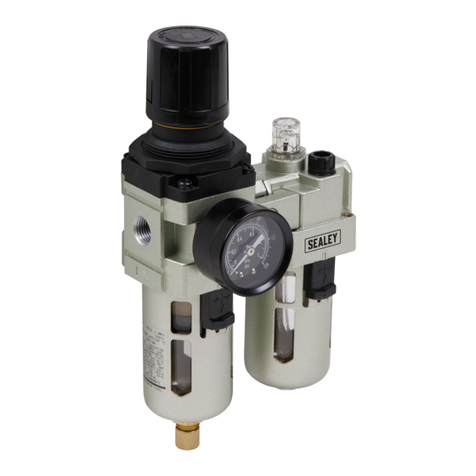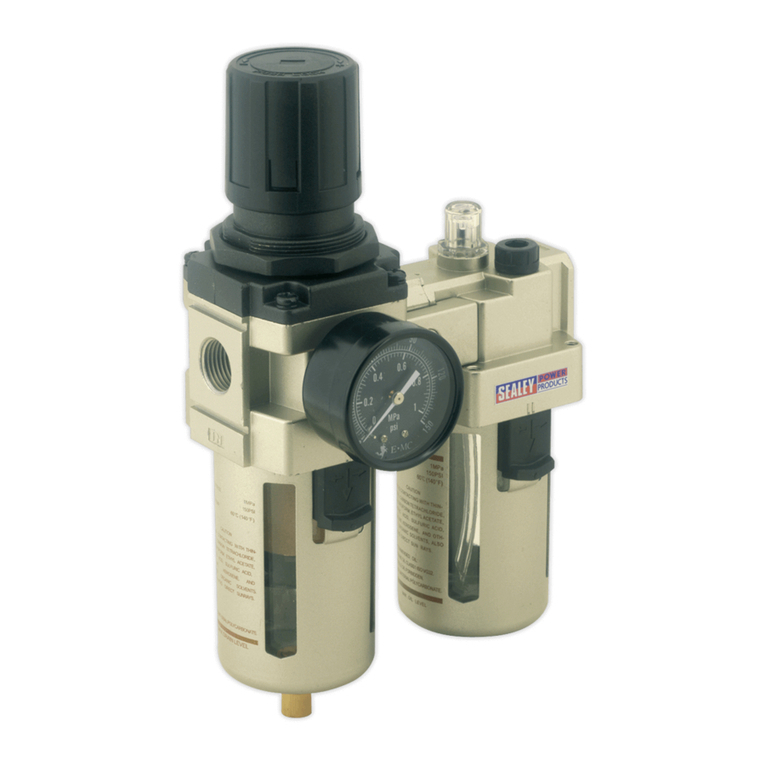
1.3. PERSONAL PRECAUTIONS
9Ensure there is another person within hearing range of your voice and close enough to come to your aid, should a problem arise when
working near a lead-acid battery.
9Wear safety eye protection and protective clothing. Avoid touching eyes while working near battery.
9Have fresh water and soap nearby in case battery acid contacts skin, clothing or eyes.
9Wash immediately with soap and water if battery acid contacts skin or clothing. If acid enters eye, flush eye immediately with cool, clean
running water for at least 15 minutes and seek immediate medical attention.
9Remove personal metallic items such as rings, bracelets, necklaces and watches. A lead-acid battery can produce a short-circuit current
which is high enough to weld a ring or the like to metal, which would cause severe burns.
9Ensure hands, clothing (especially belts) are clear of fan blades and other moving or hot parts of engine, remove ties and contain long hair.
8DO NOT smoke or allow a spark or flame in the vicinity of battery or engine.
1.4. CHARGING SAFETY INSTRUCTIONS
9Familiarise yourself with the application and limitations of the charger as well as the potential hazards. Also refer to the vehicle
manufacturer’s hand book. IF IN ANY DOUBT CONSULT A QUALIFIED ELECTRICIAN.
9Ensure the charger is in good order and condition before use. If in any doubt do not use the unit, contact your Sealey stockist.
9 Use the starter/charger in the upright position only and ensure it is placed on a stable surface which will adequately support its weight.
9 Ensure the charger is disconnected from the mains supply before attaching/detaching the power clamps to/from the battery.
9Keep tools and other items away from the engine and ensure you can see the battery and working parts of engine clearly.
9Ensure the output of the charger is the same voltage as the battery.
9Ensure that during charging, the charger is placed in a location where there is sufficient ventilation to prevent the build up of explosive
gases from a lead acid battery, and DO NOT cover or obstruct the charger ventilation louvres.
9If battery has caps to access the battery fluid, remove the caps and check the fluid level before connecting the power clamps.
9If necessary top-up the battery with distilled water by referring to the battery manufacturer’s instructions (Apply the personal safety
9precautions described in part 1.3).
9If the charger receives a sharp knock or blow the unit must be checked by a qualified service agent before using.
9If the battery terminals are corroded or dirty clean them before attaching the power clamps.
9Keep children and unauthorised persons away from the working area.
8DO NOT dis-assemble the charger for any reason. The charger must only be checked by qualified service personnel.
8DO NOT try to charge a non-rechargeable battery.
8DO NOT try to charge battery if battery fluid is frozen.
WARNING! To prevent the risk of sparking, short circuit and possible explosion DO NOT drop metal tools in the battery area, or allow
them to touch the battery terminals.
8DO NOT allow power clamps to touch each other or to make contact with any metallic part of the vehicle.
8DO NOT cross connect power leads from charger to battery. Ensure positive (+/RED) is to positive and negative (-/BLACK) is to negative.
8DO NOT pull the cables or clamps from the battery terminals.
8DO NOT use the charger outdoors, or in damp, or wet locations and DO NOT operate within the vicinity of flammable liquids or gases.
8DO NOT use charger inside vehicle or inside engine compartment.
9Ensure there is effective ventilation to prevent a build-up of explosive gases, and DO NOT cover or obstruct charger ventilation louvres.
8DO NOT use the charger for a task for which it is not designed.
WARNING! DO NOT simultaneously charge batteries of different capacities or discharge levels.
WARNING! If a fuse blows, ensure it is replaced with an identical fuse type and rating. Use only Sealey genuine parts.
9When not in use, store the charger carefully in a safe, dry, childproof location.
This appliance can be used by children aged from 8 years and above and persons with reduced physical, sensory or mental capabilities or lack of
experience and knowledge if they have been given supervision or instruction concerning use of the appliance in a safe way and understand the
hazards involved. Children shall not play with the appliance. Cleaning and user maintenance shall not be made by children without supervision.
2. i INTRODUCTION
Combination units capable of both charging batteries and providing boost power to help start vehicles with flat batteries. Models feature easy-to-
read ammeters and illuminated power switches. Circuitry is protected by a panel-mounted fuse. Suitable for fleet operators running car and van
derivatives. Built in polarity protection.
3. i SPECIFICATION
MODEL No. SUPERBOOST 140_V4 SUPERBOOST 160_V5
INPUT 230V 50 Hz 230V 50 Hz
OUTPUT VOLTAGE 12V/24V 12V/24V
CHARGE CURRENT PEAK (EN) 21A (14A) 30A (20A)
BATTERY RANGE 15-240Ah 15-300Ah
START CURRENT PEAK (EN) 140A(80A) 160A(100A)
INPUT CURRENT - CHARGE 2.7A 3.5A
INPUT CURRENT - START 11A 12.5A
POLARITY PROTECTION 1 x 50A 1 x 80A
CHARGING RATES 3 3
FUSE PART NO. SBOOST160V519 SBOOST180V519
4. i OPERATION
4.1. PREPARATION
It is important to correctly prepare for charging, ensuring that you follow Section 1 safety regulations carefully. Check that the capacity
of the battery is compatible with the charger output.
4.1.1. Follow any vehicle manufacturer’s instructions regarding battery charging. Note special instructions for in-vehicle charging.
4.1.2. Check the battery to ensure that the NEGATIVE and POSITIVE terminals are clearly identifiable before removing the battery from the vehicle.
Original Language Version
© Jack Sealey Limited SUPERBOOST SERIES: 140.V4, 160.V5 Issue 1 10/11/17
